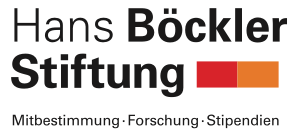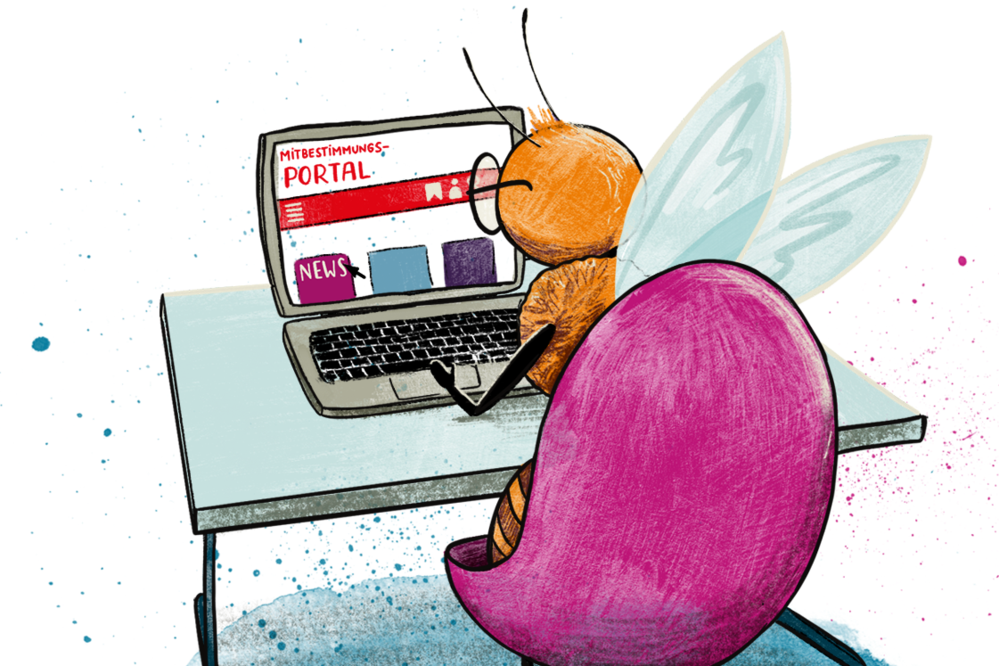Column
Employer surveillance against workers spreads
Silicon Valley says technology will liberate. In reality, it is trapping workers inside a Big Brother panopticon where you don’t even know when and how you are being watched.
The relentless tentacles of Big Brother digital surveillance continue to creep into the workplace and the lives of workers. It’s doing that for on-site workers as well as for remote workers in their homes. It is marching forward in the US and slowly making inroads in the EU (despite the passage of the General Data Protection Regulation and Digital Services and Digital Markets acts). Many in the West have criticized China for its totalitarian reach into people’s lives, deploying the latest digital technologies as the infrastructure for its infamous social credit system. Yet in the US, Germany and elsewhere, similarly disturbing trends are becoming more apparent. And they are leading to alarming consequences for workers.
Two years ago, in the middle of a global pandemic, I wrote an article for Mitbestimmungsportal in which I identified the early stages of these developments, as employers began implementing technologies to track increased numbers of their work-from-home employees (see “Corona-fied: Employers Spying On Remote Workers In Their Homes?”). Since that time, a booming market for new and better types of surveillance technology has taken off, as businesses implement ways to track hundreds of millions of workers operating remotely. The technologies have gotten more powerful, employers have gotten more intrusive, and these trends have solidified into the makings of a disturbing future for workers and their families.
This kind of tracking and monitoring already has become commonplace in lower-paying service sector jobs. The notorious case of Amazon’s surveillance of employees and their second-by-second productivity scores is well documented. But less known are occupations like Kroger cashiers, UPS drivers and many others. The New York Times reports that 8 of the 10 largest private U.S. employers track the productivity metrics of individual workers, many in real time.
Employer-employee relationships have become more of an analytics business
Now white-collar jobs that require graduate degrees are getting the “blue-collar treatment.” Digital productivity monitoring in the form of trackers, scores, “idle” notifications and constant amassing of surveillance data is becoming the norm. Employer-employee relationships, once reliant on physical observations of workers and personal interactions, have become more of an analytics business, requiring reams of intrusive data on each employee. Investment in new workplace technologies has been soaring as the category called “performance management” has become one of the fastest growing, with an eightfold increase in funding in the last five years.
The productivity paradox: chaplains on a time clock and ‘spiritual care drive-bys’
The Reverend Heather Thonvold in Minnesota became a hospice chaplain to help patients and their families wrestle with issues of death and grief. But then her employer, the nonprofit Allina Health, started requiring chaplains to accrue “productivity points.” A visit to the dying accrued only one point, while participating in a funeral got one and three quarters points and a phone call to grieving relatives was awarded one quarter of a point.
Some patients and families need more time and emotional support than is allotted per visit, so this scoring system left the chaplains trying to resolve a moral dilemma – should they see the patients who earn the most points, or the patients who had the greatest need?
“This is going to sound terrible,” Rev. Thonvold says, “but every now and again I would do what I thought of as ‘spiritual care drive-bys’” to rack up points.” If patients were sleeping, the chaplain could talk to the nurse about a whole bunch of patients, one after another, each one counting as a “visit” even though the chaplain never actually spoke with the dying patients.
Finally Thonvold concluded that the ridiculous and inappropriate metrics prevented her from fulfilling her calling, and she quit. But this kind of “productivity paradox” – in which the most measurably “productive” activity may not provide the best service – is playing out in occupation after occupation. Architects, academic administrators, doctors, nursing home workers, pharmaceutical assistants, insurance underwriters, employees of e-commerce companies and lawyers are being pressured by increasing levels of digital surveillance over every minute of their workday. One surveillance report viewed by the New York Times had over 20 entries in a single hour of an employee’s day.
The algorithmic rip-off: full-time work = part-time pay
Other companies are implementing a Big Brother panopticon of surveillance that not only makes their employees increasingly uncomfortable, but also shortchanges their pay. ESW Capital, a Texas-based group of business software companies, has deployed built-in cameras on their company laptops which snap regular photos of their employees’ faces and screens, creating timecards to verify whether they are working. The software logs surveillance data in 10-minute intervals. Any snapshot in which a worker has momentarily stepped away from their workstation could cost them up to 10 minutes of pay. Many workers across a variety of occupations say productivity pressure has led to problems with everyday needs such as bathroom or coffee breaks, because workers are docked pay whenever they are away from their laptop’s all-seeing eye.
You have to be in front of your computer 55 or 60 hours just to get those 40 hours paid
Moreover, offline work — reading printouts, supervising and mentoring employees, chatting with co-workers, working out ideas on paper — doesn’t register in the software as active work. The “new time clocks” have a hard time capturing offline activity and are unreliable at assessing hard-to-quantify tasks. So taking time to banter with work colleagues – watercooler time, as it used to be called – is being abolished. Workers are complaining that “You have to be in front of your computer, in work mode, 55 or 60 hours just to get those 40 hours counted and paid for.” The workday, in effect, has grown longer and longer.
Consequently, employees are complaining that they are being underpaid, as well as being algorithmically harassed to the point of experiencing increased anxiety.
Software overseers = the keyboard is King
UnitedHealth Group, one of the largest healthcare companies in the US with 350,000 employees and hundreds of billions of dollars in annual revenues, subjects its social workers to the worst kind of surveillance. In tracking what constitutes work, the computer keyboard has been declared King, even in occupations where it makes no sense.
Social workers have been counted as “idle” while counseling patients in drug treatment facilities, simply because they are not active on their keyboards. Therapists seeing patients often need to engage in sensitive conversations with patients, yet their laptops mark them “idle” when they cease keyboard activity for more than a short while.
“This literally killed morale,” said one UnitedHealth supervisor. “I found myself really struggling to explain to all my team members, master’s-level clinicians, why we were counting their keystrokes.” And their accumulated scores were used in part to determine compensation because they were paid only for the minutes they were actively “working.”
One tracking and monitoring software suite popular among businesses is called WorkSmart. Federico Mazzoli, one of the creators of this software, started using it in his own job. Soon, he doubted its accuracy and whether it was actively tracking his real work hours. After being digitally harassed by his own software product, he became nagged by anxiety. “Some days you were just moving the cursor around just for the sake of it,” he said. The tool was powerful but dangerous, he concluded, and he left the company a year later.
In-person workplaces have embraced the tools as well. Occupations such as grocery cashiers are under immense pressure to quickly scan items, which makes it harder for them to be patient with slow-moving elderly shoppers. Increasingly public employees are tracked too -- New York’s Metropolitan Transportation Authority tried to coerce engineers and other employees by telling them they could work remotely one day a week if they agreed to full-time productivity monitoring.
“Big Brother employer” comes to Europe
While these trends are developing fastest in the US, led by Silicon Valley companies, they are appearing also in Europe. Despite the General Data Protection Regulation which should, in theory, prevent the misuse of digital spying of workers, the pandemic launched an all-out assault on these restrictions, which has continued to unfold.
A study by researcher Wolfie Christl, published by the Vienna-based Cracked Labs, found that Celonis, a German data processing company, sells software products that analyze and evaluate a wide range of data on the work activities of employees. Celonis sells spy software installed on the employees' computers to record screen contents, keystrokes, mouse clicks, scrolling and even the contents of the cut-and-paste clipboard. It can analyze sent e-mails and website visits. Based on its algorithmic evaluations, Celonis assigns work tasks to employees in real time and ranks lists of employees according to their speed in delivering orders. This processing of personal data and work patterns then is used in evaluations of employees.
Another pernicious surveillance dragnet is being practiced by the German mail order giant Zalando. It has been using a comprehensive rating system of its employees, which was revealed by a study published by the Hans-Böckler-Stiftung. The researchers found that Zalando’s software, called Zonar, uses reams of personal and performance data to sort thousands of employees into three groups -- low, medium and high performance. The rating system works like an Internet-based consumer evaluation portal and is presented as an objective measurement about job performance. However, the “customers” doing the rating are employees themselves, and the “products” they are rating are fellow employees.
But it gets worse – Zalando uses these results to make decisions about salary increases and promotions, which increases internal competition among employees and pressure to perform. This undermines teamwork and solidarity, and has negative effects on the working atmosphere and quality of work. The sociologist authors of the study concluded that, at its core, Zonar is about being able to constantly evaluate, control and sanction employees, using modern digital technologies. Workers have protested this surveillance, viewing this total control system as abusive. But rather than reforming its ways, Zalando has doubled down by taking legal action against the authors of this study.
Austrian companies also have been a leader in worker surveillance technologies. A study by sociologist Hans Christian Voigt examined five case studies to show how digital surveillance and control are being used. Based on anonymous interviews with works councils, Voigt’s study found that “with the digital recording of working time and granular recording of data on activities, a division into productive and non-productive working time seems to have become widespread.”
Digital surveillance of workers is not only a feature of America’s ‘cowboy capitalism’
Some companies have targeted their surveillance products to specific occupations or industries. EasyTrack, an Austrian management system for fleets of professional drivers, collects a wide range of data such as exact GPS locations, engine idling, sudden acceleration and braking, routes driven and working times. Supervisors receive email notifications when an employee drives too fast, leaves the engine running too long, makes an unscheduled vehicle stop, or leaves a defined area. Part of its advertised attraction is that its device can be easily hidden in the vehicle, so that the driver does not even know he/she is being constantly monitored.
These cases and more show that digital surveillance of workers is not only a feature of America’s “cowboy capitalism,” it is also increasingly appearing in Germany, Austria and other countries that have high levels of data protection, labor law protection and comparatively strong labor unions.
Worker and regulatory push back
While this surveillance onset has been relentless, signs of worker resistance have begun to emerge. Some workers have sued their employers for unpaid wages, claiming that the digital surveillance technology was inaccurate. Some US states are fighting back as well. A New York law that took effect this spring requires employers to disclose the type of information they collect. But efforts to enact a similar rule in California stalled amid opposition from business groups.
Also, under Germany’s co-determination system, the tool known as Betriebsvereinbarungen (company agreements) allows works councils to negotiate with the employer over how technology is used. Such agreements, collected and analyzed by the Hans-Böckler-Stiftung, help to develop “best practices” and to build trust and acceptance of new technologies once they have been determined to be safe for widespread use.
Workers also are fighting back in their own clever ways. One trick is to look for ways to outsmart the software. On TikTok, workers have begun creating videos and offering tips on how to fool the systems, including with a “mouse jiggler,” a device that creates the appearance of constant mouse activity. One popular model is called – wait for it – “Liberty.” Other remote workers use a second monitor and only have their work-related apps on their primary monitor; other workers have learned to time the intervals between screen shots to dodge the tracking.
Monitoring is not only ethically dubious, but it also doesn’t make sense from a business standpoint
And while these kinds of surveillance software are designed allegedly to reduce employee slacking, new research cited in Harvard Business Review suggests that this approach is seriously backfiring. Studies found that monitoring loyal, hardworking employees led them to subconsciously feel less trusted and less willing to take responsibility for their own conduct. Monitored employees were substantially more likely to engage in behaviors such as cheating, stealing company equipment, and purposely working at a slow pace. Instead of operating from a place of their better angels, they are more likely to act with a reduced internal sense of morality and responsibility.
This blowback shows that monitoring is not only morally and ethically dubious, since it undermines the employer-employee relationship and makes the mistrusted worker feel less valued. It also doesn’t make sense from a business standpoint, since some monitored employees develop negative, uncooperative attitudes and don’t do their highest quality work. As workers depart for better jobs, that kind of churn is disruptive to teamwork and workflows.
Many of today’s workplace regulations, whether in the US, Germany or the EU, were written long before this new era of the remote worker and digital surveillance. Existing laws in both Europe and the US have a number of loopholes that, under certain conditions, are allowing employers to get away with monitoring that is possibly illegal.
Of course many companies are not (yet) using this kind of spy technology. But the pressures of competitive markets often incentivizes convergence of business practices. As people increasingly get used to permanent tracking in ever more parts of our lives, our defenses may melt away. The technology is growing and becoming ominously more powerful, a lot faster than governments have been able to regulate it.
George Orwell thought the specter of Big Brother would come from insidious and intrusive government surveillance, like in China and Russia. Instead, at least in Western countries, it is coming from the corporate sector. Government regulation, along with media exposure and rising popular awareness of digital tech’s toxicities, remain the key instruments for reining in these dangerous practices. But so far corporate lobbyists have been able to disrupt the political will necessary to deploy a comprehensive regulatory toolbox.
German Language Version
-
Column
AI's impact on US workplaces continues to accelerate
-
Column
Trump and Musk mounting furious attack on labor rights and workers
-
Column
US support for codetermination from an unlikely source – conservative Republicans
-
Column
Can the EU and the US protect their 21st century workforces?
-
Column
Massive tech layoffs continue as companies retool for AI
-
Column
US labor unions strike over impacts of AI and new technologies
-
Column
Antitrust law is (finally) being enforced again in the U.S.
-
Column
Employer surveillance against workers spreads
-
Column
If it seems too good to be true … it probably is
-
Column
Helping gig workers help themselves
-
Column
Workers of the World…quit?
-
Column
Will US labor unions stand by Uber drivers and gig workers?
-
Column
Stirrings of union organizing in the “paradise” of Big Tech
-
Column
Will Pres. Joe Biden restore worker and union power?
-
Column
Corona-fied: employers spying on remote workers in their homes?
-
Column
The challenges of the post-coronavirus workforce
-
Column
Amazon workers fight back
-
Column
A blow against "bogus self-employment" and gig economy
-
Column
Renewing Worker Cooperatives for the Digital Age
-
Column
Codetermination takes the spotlight in the US
-
Column
Who will fight for the 'good jobs' economy?
-
Column
Trump attacks workers and the labor movement in the US
-
Column
The distributed workforce: what will jobs of the future look like?
-
Column
The "Uber way" of precarious work



